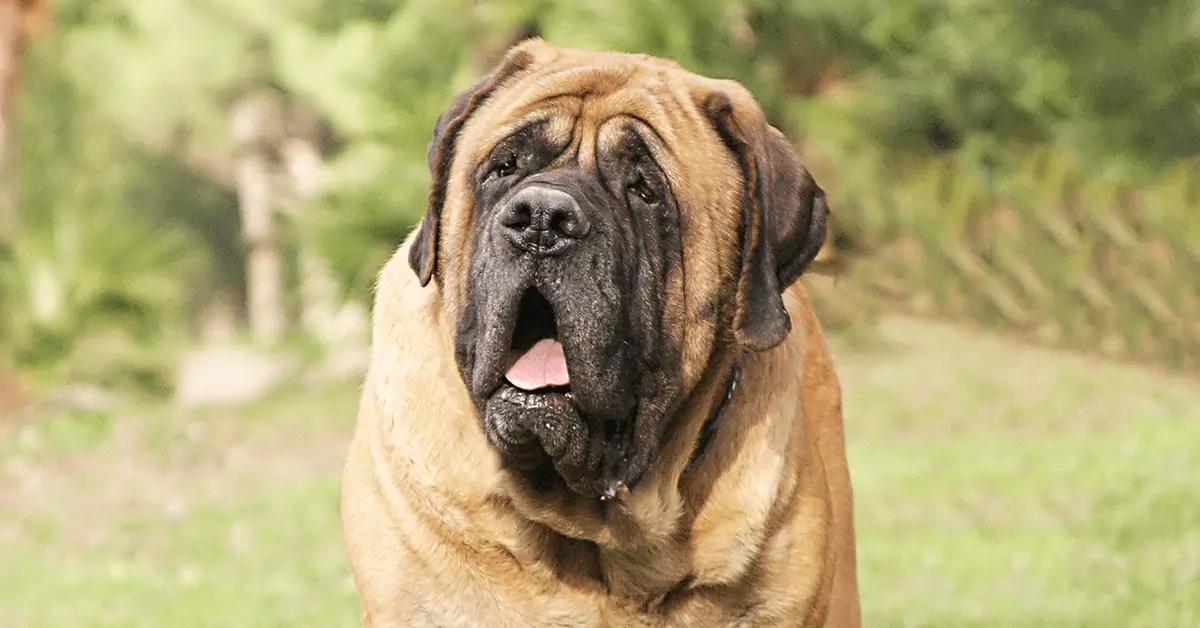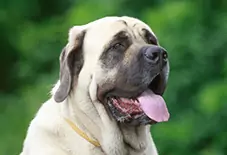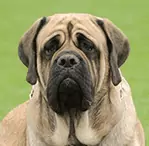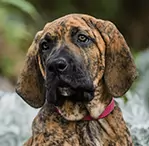
Meet the Mastiff
Best Fur Friend
Drooliest Dog
Low-Maintenance Looks
My Many Looks
My Breed Characteristics
Furbulous Fact
As I Grow Up
History of My Breed
Care Tips
Training Tips
Personality
Affectionate
Gentle
Loyal
Group
Working Group
Origin
England
Life Span
6-10 Years
Breed Popularity
#33 of 195
Height Range
27.5-36 Inches (at the shoulder)
Weight Range
120-230 Pounds
Coat Details
Type
Short
Texture
Straight Outercoat & Dense Undercoat
Features
Double Coat
Colors
Apricot, Brindle, or Fawn + Black Mask
Hypoallergenic
Cost to Buy
$600-$2,000
Lifetime Care Cost
$19,560
My Many Looks
My Breed Characteristics
Furbulous Fact
As I Grow Up



History of My Breed
Care Tips
from Dr. Jessica Greenberg, Associate VeterinarianPay attention to your Mastff’s joints.
As with many large breed dogs, Mastiffs can be prone to hip dysplasia. But they can also be prone to a condition called panosteitis, which is when parts of their long bones become inflamed and painful. Males are significantly more prone to panosteitis and high calcium intake may also be a contributing factor. Both conditions can cause limping and discomfort but you’ll need to consult your veterinarian to get a full diagnosis.
Monitor your Mastiff’s eyes for irritation.
Mastiffs can suffer from both entropion and ectropion. Entropion occurs when part of the eyelid is turned inward causing the eyelashes to rub against the eye and cause irritation. Ectropion is when eyelids roll outward and can also cause irritation. Don’t just chalk up irritated eyes to the breed – consult your veterinarian if you see any inflammation or irritation.
Look out for heart murmurs and consult a cardiologist if your Mastiff has one.
Mastiffs are prone to both dilated cardiomyopathy and pulmonic stenosis. Both of these conditions can vary in severity and treatment but a heart murmur is typically the first sign. While your regular veterinarian will be able to identify and grade the heart murmur, a veterinary cardiologist will be required to provide a confirmative diagnosis.
Training Tips
from Dr. Jessica Greenberg, Associate VeterinarianEarly obedience training is a must.
This breed grows quickly and grows a lot. Mastiffs are big, heavy dogs that tend to be protective. It is key to start training your Mastiff as soon as they come home, preferably starting at 8-10 weeks.
Socialize your Mastiff early and often.
As protective dogs, Mastiffs need to socialize among people and other dogs, especially smaller breeds. They also learn from other dogs, so visiting the dog park is great for their social development.
Train your Mastiff to walk on a leash.
Your Mastiff needs to know more than just basic manners. Because of their large size, teaching them how to walk on a leash will set the foundation of you being the leader. They are very obedient dogs so it is not that hard.
My Many Looks
My Breed Characteristics
Furbulous Fact
As I Grow Up
History of My Breed
Care Tips
Training Tips
-
Personality
Affectionate
Gentle
Loyal
-
Group
Working Group
-
Origin
England
-
Life Span
6-10 Years
-
Breed Popularity
#33 of 195
-
Height Range
27.5-36 Inches (at the shoulder)
-
Weight Range
120-230 Pounds
-
动物皮毛
Type
Short
Texture
Straight Outercoat & Dense Undercoat
Features
Double Coat
Colors
Apricot, Brindle, or Fawn + Black Mask
-
Hypoallergenic
-
Cost to Buy
$600-$2,000
-
Lifetime Care Cost
$19,560


